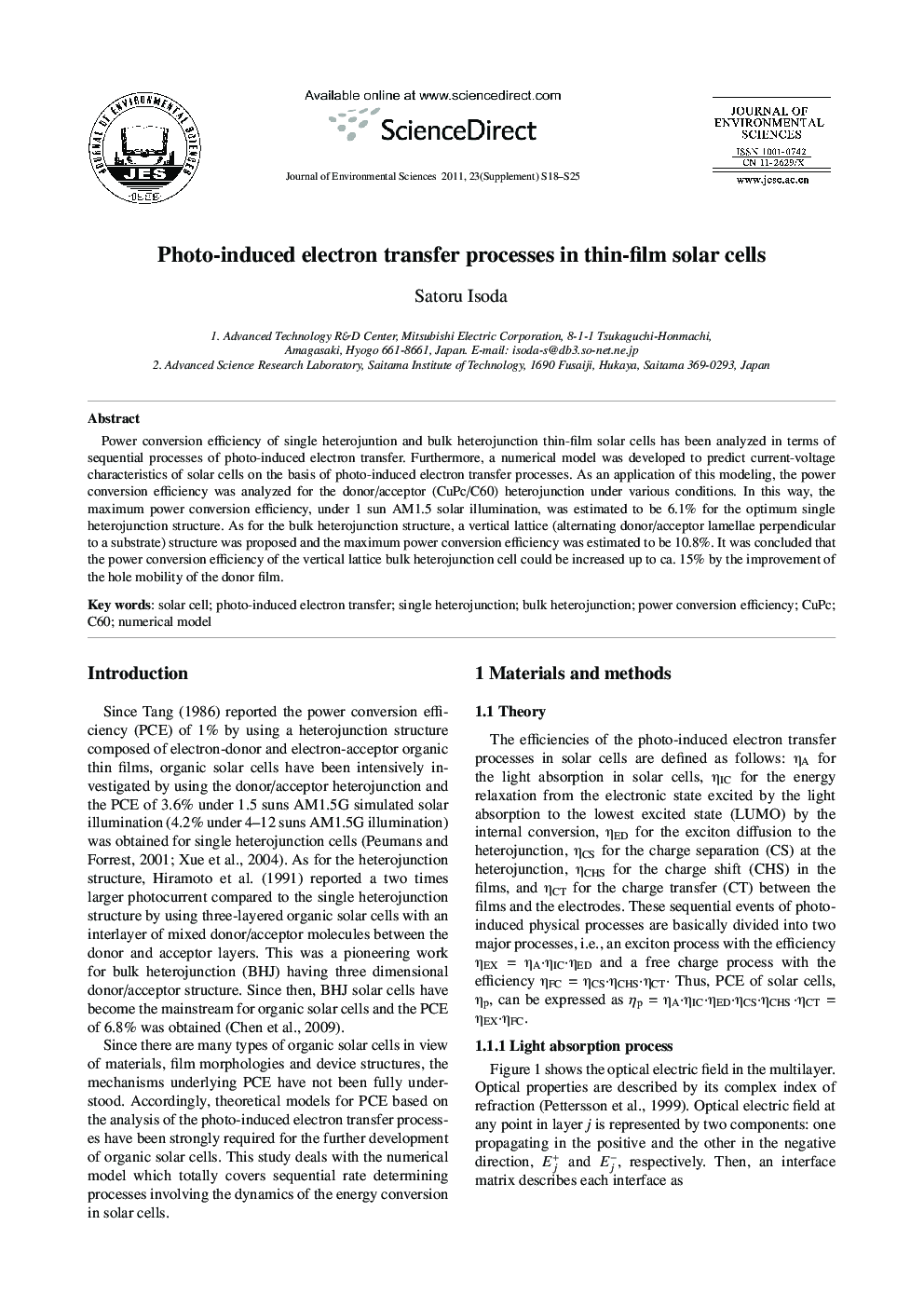| Article ID | Journal | Published Year | Pages | File Type |
|---|---|---|---|---|
| 4455696 | Journal of Environmental Sciences | 2011 | 8 Pages |
Power conversion efficiency of single heterojuntion and bulk heterojunction thin-film solar cells has been analyzed in terms of sequential processes of photo-induced electron transfer. Furthermore, a numerical model was developed to predict current-voltage characteristics of solar cells on the basis of photo-induced electron transfer processes. As an application of this modeling, the power conversion efficiency was analyzed for the donor/acceptor (CuPc/C60) heterojunction under various conditions. In this way, the maximum power conversion efficiency, under 1 sun AM 1.5 solar illumination, was estimated to be 6.1% for the optimum single heterojunction structure. As for the bulk heterojunction structure, a vertical lattice (alternating donor/acceptor lamellae perpendicular to a substrate) structure was proposed and the maximum power conversion efficiency was estimated to be 10.8%. It was concluded that the power conversion efficiency of the vertical lattice bulk heterojunction cell could be increased up to ca. 15% by the improvement of the hole mobility of the donor film.
